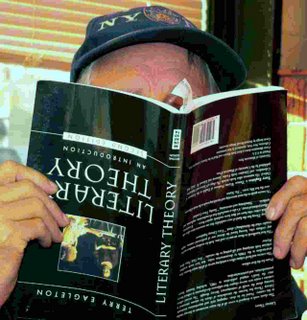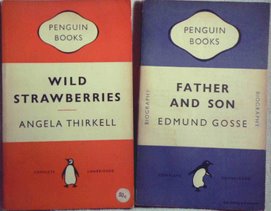Angus Wilson: Cruel-Kind Enemy of False Sentiment and Self-Delusion
Margaret Dabble Says I Made the Right Move Picking Up Angus Wilson in a 1950s Penguin Edition:
The New York Times
January 29, 1995
Books
Angus Wilson: Cruel-Kind Enemy of False Sentiment and Self-Delusion
By MARGARET DRABBLE
The writers we discover for ourselves hold a special and lasting place in our affections and our imagination. I first read Angus Wilson when I was an undergraduate at Cambridge in the late 1950's. Nobody had recommended him: I found him for myself. 'Anglo-Saxon Attitudes' had appeared in a Penguin paperback in 1958, and maybe this was the novel that introduced him to me -- or maybe it was a volume of short stories, or his first novel, 'Hemlock and After,' also available in Penguin. However I came upon him, I rapidly read my way through all that was available, and began to wait eagerly for the next volume. I can remember to this day the sheer physical pleasure of sitting on the flat roof outside my tower room at Newnham College, in the warm sunlight, when I should have been studying for some examination or other, reading Angus Wilson instead and knowing myself to be in the company of a master. . . .
. . . The excitement of discovery had a subversive element. Cambridge in the 1950's was heavily dominated by F. R. Leavis and his Great Tradition: we were more advanced than Oxford, for we were permitted -- indeed enjoined -- to read and admire D. H. Lawrence. But there all curiosity ended. . . .
. . . His critical energy, in the 1950's, was akin to that of the heroes of his own youth, Aldous Huxley and Evelyn Waugh, and he spared neither young nor old -- horrible and pretentious children as well as pompous and sadistic venerable bullies abound in his work. But his writing also had a great and growing humanity: later novels showed a profound and compassionate insight into the lives of women in a society that denied them choice, autonomy and dignity.
I knew this pile of Penguins from the 1950s was a precious find. The covers, a far cry from the artsy invitation to design our own covers for 'My Penguin' Classic (see the Penguin Blog), do it for me more than the 3-D variety for pop fiction so current today.



No comments:
Post a Comment